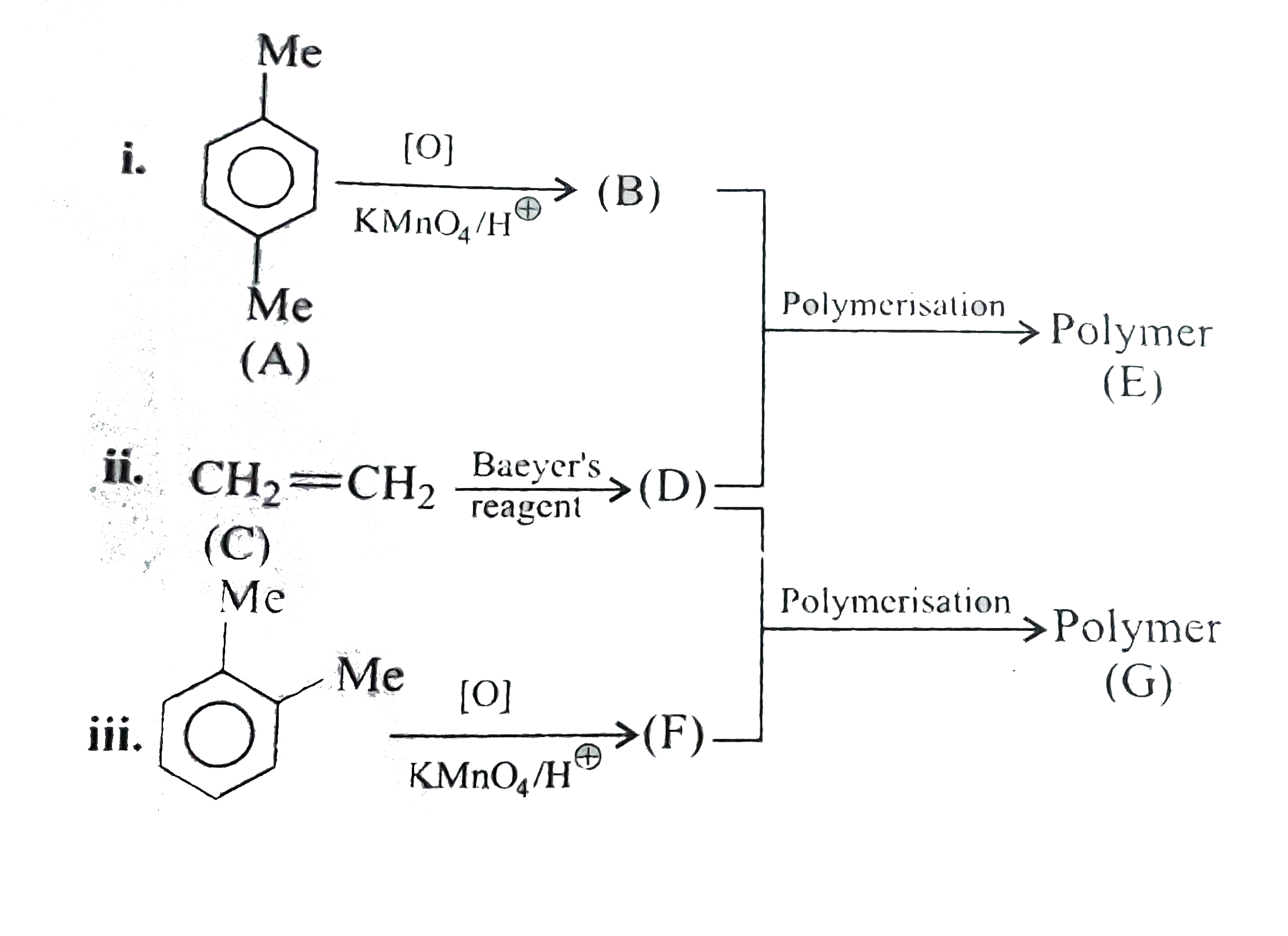THERMOPLASTIC & THERMOSETTING POLYMER
Step-by-Step Solution:
Step 1: Define Thermoplastic Polymers
- Thermoplastic polymers are materials that can be softened and melted upon heating. When they are cooled, they solidify again. This property allows them to be reshaped multiple times without undergoing any significant chemical change.
Step 2: Characteristics of Thermoplastic Polymers
- They have low melting points and low tensile strength.
- They are synthesized through a process known as addition polymerization.
- They can be processed using various methods such as injection molding, extrusion, blow molding, and rotational molding.
- The molecular chains in thermoplastics are held together by secondary bonds.
Step 3: Define Thermosetting Polymers
- Thermosetting polymers are made up of long chains of molecules that are cross-linked. Once they are set, they cannot be remolded or reshaped upon heating.
Step 4: Characteristics of Thermosetting Polymers
- They have high melting points and high tensile strength.
- They are synthesized through a process called condensation polymerization.
- They are processed using methods like compression molding and reaction injection molding.
- The molecular chains in thermosetting plastics are held together by primary bonds due to the strong cross-linking.
Step 5: Examples of Thermoplastic and Thermosetting Polymers
- Examples of thermoplastics include:
- Polystyrene
- Teflon
- Acrylic
- Nylon
- Examples of thermosetting plastics include:
- Vulcanized rubbers
- Bakelite
- Epoxy resins
- Polyurethane
- Thermoplastic polymers are materials that can be softened and melted upon heating. When they are cooled, they solidify again. This property allows them to be reshaped multiple times without undergoing any significant chemical change.
- They have low melting points and low tensile strength.
- They are synthesized through a process known as addition polymerization.
- They can be processed using various methods such as injection molding, extrusion, blow molding, and rotational molding.
- The molecular chains in thermoplastics are held together by secondary bonds.
- Thermosetting polymers are made up of long chains of molecules that are cross-linked. Once they are set, they cannot be remolded or reshaped upon heating.
- They have high melting points and high tensile strength.
- They are synthesized through a process called condensation polymerization.
- They are processed using methods like compression molding and reaction injection molding.
- The molecular chains in thermosetting plastics are held together by primary bonds due to the strong cross-linking.
- Examples of thermoplastics include:
- Polystyrene
- Teflon
- Acrylic
- Nylon
- Examples of thermosetting plastics include:
- Vulcanized rubbers
- Bakelite
- Epoxy resins
- Polyurethane
Topper's Solved these Questions
- POLYMERSBOOK - AAKASH INSTITUTE ENGLISHCHAPTER - POLYMERSEXERCISE - ASSIGNMENT Section-A (Competition level Questions)
47 Videos
- POLYMERSBOOK - AAKASH INSTITUTE ENGLISHCHAPTER - POLYMERSEXERCISE - ASSIGNMENT Section-B (Objective type Questions (One option is correct ))
10 Videos
- POLYMERSBOOK - AAKASH INSTITUTE ENGLISHCHAPTER - POLYMERSEXERCISE - Examples
6 Videos
- ORGANIC CHEMISTRY: SOME BASIC PRINCIPLE AND TECHNIQUESBOOK - AAKASH INSTITUTE ENGLISHCHAPTER - ORGANIC CHEMISTRY: SOME BASIC PRINCIPLE AND TECHNIQUESEXERCISE - TRY YOURSELF
28 Videos
- PRINCIPLES OF QUALITATIVE ANALYSISBOOK - AAKASH INSTITUTE ENGLISHCHAPTER - PRINCIPLES OF QUALITATIVE ANALYSISEXERCISE - Assignment (SECTION H)
9 Videos
Similar Questions
STATEMENT-1 : Cellulose is a natural polymer
STATEMENT-2 : Amylose is a natural polymer
STATEMENT-3 : Polyethene is a nalural polymer
View SolutionAmongst the following the total number of thermoplastics is ____ Polyester, bakelite, polyethene, PVC, teflon, PAN, PMMA nylon-6, melamine-formaldehyde.
View Solution
Knowledge Check
Polymers are :
Alarge organic molecules linking together repeating subunits of the same type called monomersBfound in proteins, carbohydrates, and nucleic acidsCdue to a dehydration reactionDall of the abovemRNA is a polymer of:
AdeoxyribonucleosidesBribonucleosidesCdeoxyribonucleotidesDribonucleotidesPMMA is the polymer of
AmethylmethacrylateBmethacrylateCmethylacrylateDethylacrylate

 Polymer
Polymer